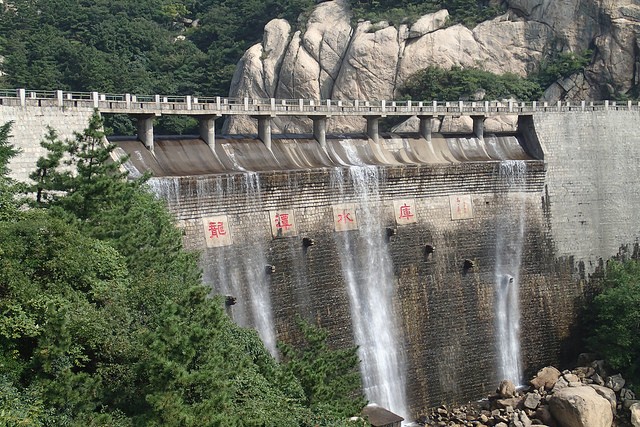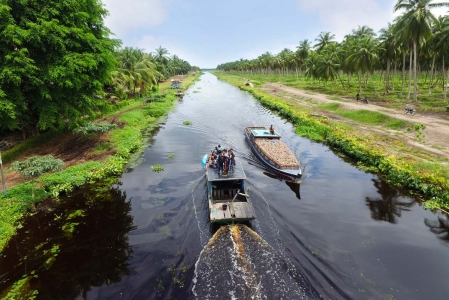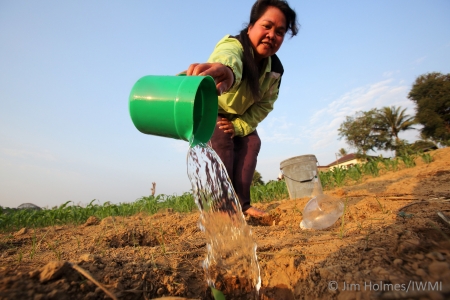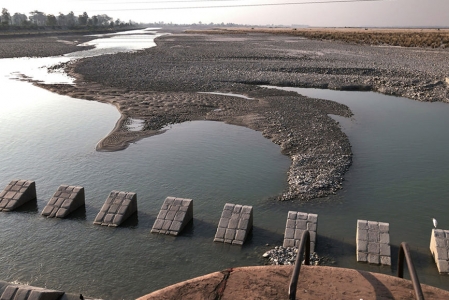Big dams have been taking a something of a pounding in recent weeks. A recent article in the New York Times by Thayer Scudder, an expert on dams and poverty alleviation, concluded that such behemoths were rarely worth the cost. The benefits trumpeted by dam proponents, he claimed, are seldom realised.
The opinion piece, from such a highly respected dam expert, set social media aflame. “Nam Theun 2 (a large dam in Laos he had been advising on) confirmed my longstanding suspicion that the task of building a large dam is just too complex and too damaging to priceless natural resources,” said Scudder.
 "The task of building a large dam is just too complex and too damaging to priceless natural resources,” said Scudder. Photo: Julien Gong Min
"The task of building a large dam is just too complex and too damaging to priceless natural resources,” said Scudder. Photo: Julien Gong MinIn truth, the benefits or otherwise accrued from large dams have always been complex and contested, as this blog’s recent series on dams explored. The subject arose again the Stockholm World Water Week session Nexus in a transboundary context: building Partnerships to bridge cooperation.
Freshwater ecosystems services and effective governance arrangements enable social and economic development. Smart water management can foster biodiversity, energy, and food security all together. Failure to take such a broad approach, however, can lead to degradation of natural systems, which in turn leaves people more vulnerable. The problem is further complicated by the fact that most river systems do not sit neatly inside national boundaries. This transboundary reality means managing the nexus of energy food and water is far easier said than done.
Something wicked this way comes
CGIAR Research Program on Water, Land and Ecosystems (WLE) Director, Andrew Noble characterised transboundary management of water and energy as a “wicked” problem: multi-faceted, long term and with no easy solutions. Addressing this needs a holistic approach. In the Mekong region a slew of dams are being built solely with hydropower in mind. But with a little creative thinking, local communities could benefit more from dry season cropping in draw down areas of the dam reservoirs. Creation of artificial wetlands could also provide fishing opportunities. The loss in water for power generation would be minimal. The benefits to local people could be immense. WLE’s Mekong team has established strong partnerships with local hydropower developers and their ideas are gaining traction.
Planning for multiple use dam management before construction seems sensible. But is there anything that can be done once a dam has already been built? Isabelle Fauconnier of the International Union for the Conservation of Nature presented an example that would suggest so.
Opening the floodgates
The Diama Dam on the Senegal River in West Africa was completed in 1986. It was designed to stop dry season salt water influx up the river and provide irrigation for agriculture. In concert with another dam higher up the watershed, the Manantali Dam, it was planned to deliver benefits in three important categories: irrigation, power and navigation, for the three affected countries (Mali, Maurtania and Senegal).
But the results were disappointing. Crop yields were generally low. Irrigated areas fell way below expectations.
What’s more the planners had neglected a vital component of any successful dam management strategy: ecosystem services. Changing the flow regime of the river was having disastrous results. Incidence of water borne diseases rose alarmingly. Invasive plants, once held back by seasonal flooding, now took over the waterways, severely impeding productive use. Traditional grazing areas disappeared.
So the transboundary river authority, OMVS, adopted a new approach. They re-framed waterway management in ecosystem terms. The new management regime tried to take into account the natural cycle of the river as a management parameter by, for example, reinstating seasonal variation. Seasonal flooding was restored. The results were dramatic. By 1998, for instance, livestock counts on the flood plain had risen from almost zero to 150,000 animals.
"The Diama case shows that transboundary institutions can adapt when the right incentives are in place," said Fauconnier.
Placing ecosystems at the heart of water infrastructure planning and management is a productive place to start.













